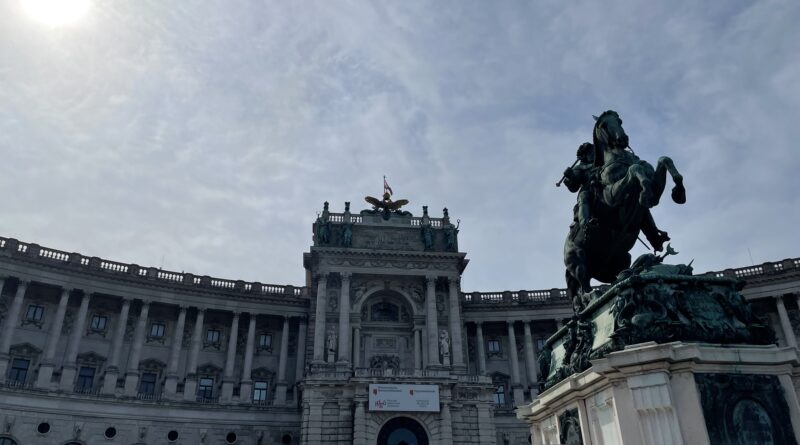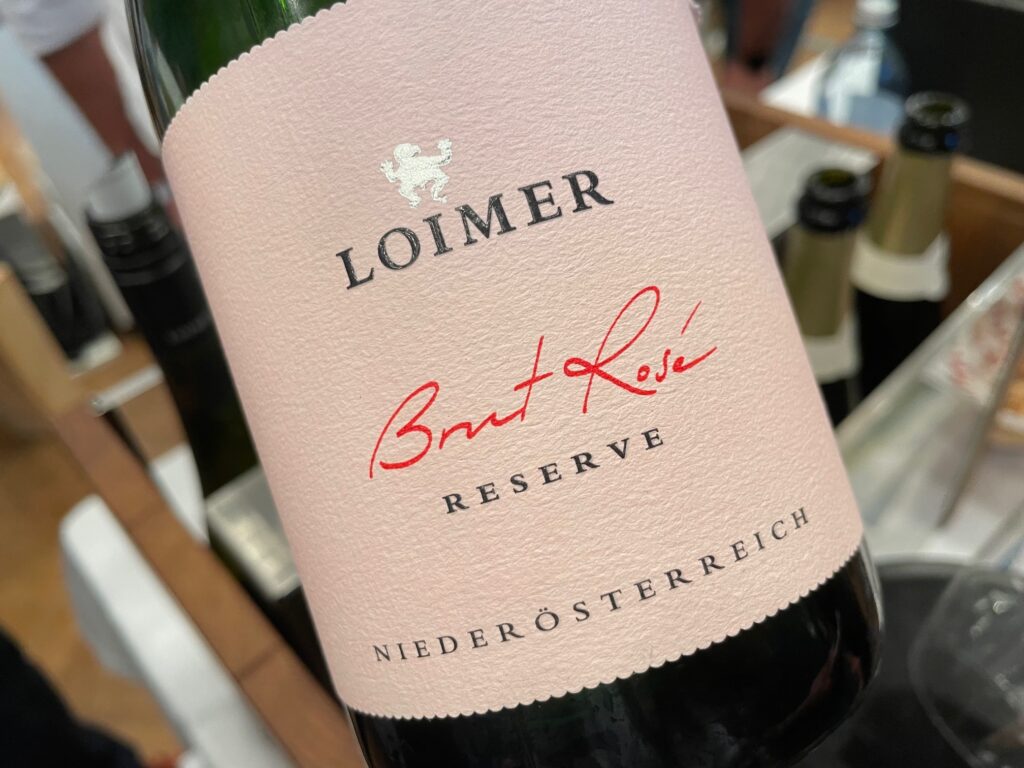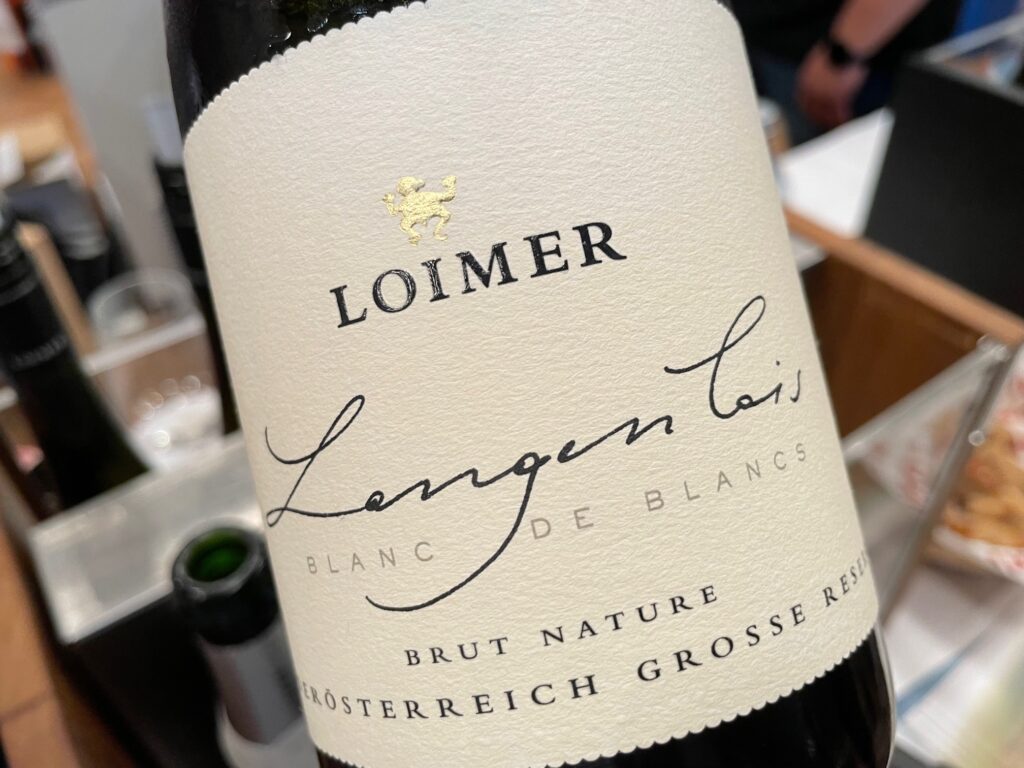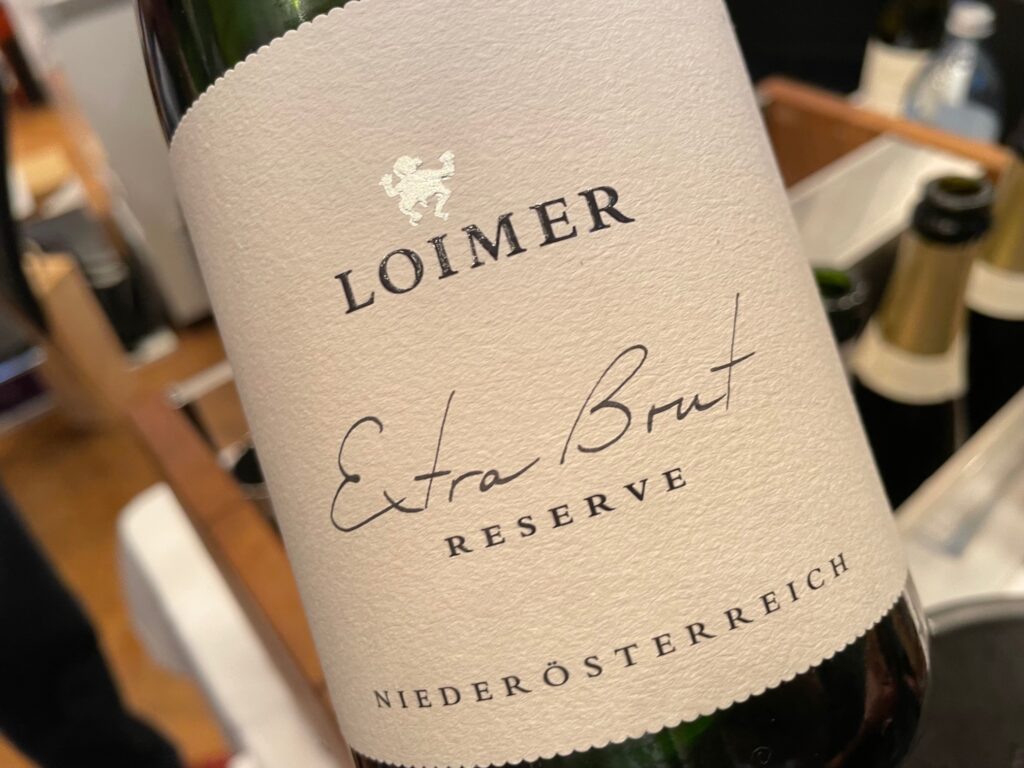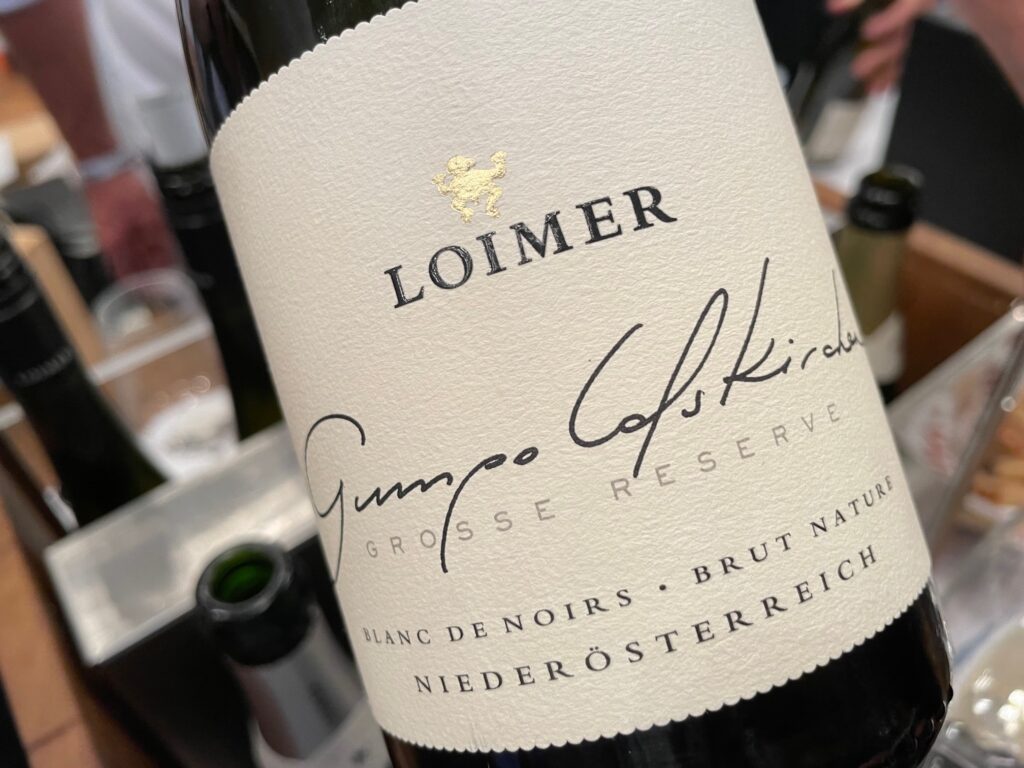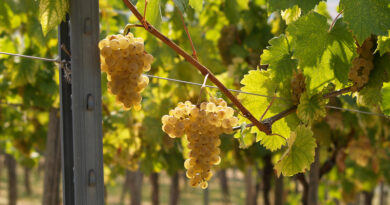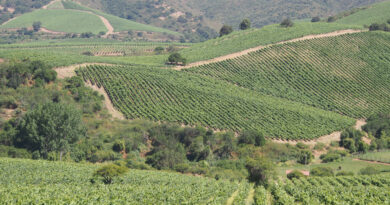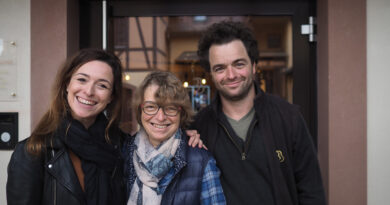VieVinum 2022: a Victorious Return to Vienna
After 4 long years, Vie Vinum, Austria’s national wine show, make a victorious return. Spread throughout Vienna’s magisterial Hofburg Palace, surely the grandest wine tasting venue on the planet, the 3 day show invited and united more than 1000 wine trade and media guests from more than 50 countries, courtesy of the Austrian Wine Marketing Board. This was in addition to the countless local Austrian trade, and after 13:00 daily, paying consumers. Even so, numbers were kept down on purpose, to provide more space and quell Covid concerns. The show kicked off on May 21, 6 short days after proof of vaccination was no longer required to enter the country.
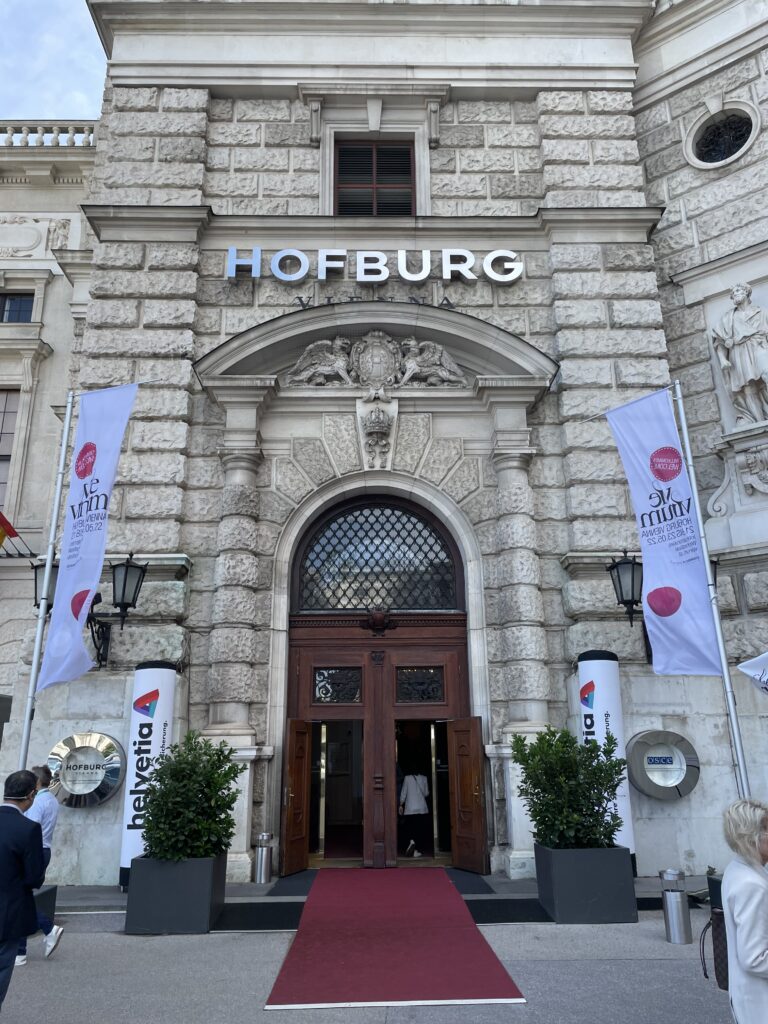
The 480 Austrian wineries were meticulously catalogued in print and digitally, the latter incredibly easy to access via QR code at each table. The code led you to an app, when downloaded provided the user with tech details (in German), and the ability to add tasting notes directly into the app. It was smart, cohesive organizational decisions like those which shaped the show, elevating the event beyond its global peers.
“It’s been a long time coming” a relieved Chris Yorke, CEO of Austrian Wine told me, when I ran into him between events. Yorke, who many know from his lengthy tenure as Global Marketing Director of New Zealand Winegrowers, assumed the top Austrian Wine role in early 2020, just before the world shuttered from Covid-19. VieVinum, typically every 2 years since its inception in 1998, was scheduled for June 2020, but the lockdowns and extra 2 years’ delay seemed to only give the organizers more time to dial in every detail. With an infectious smile and energy beyond what would be expected for the host of 1000 guests, Yorke was obviously relieved to have the event finally underway. In addition to three full days of tasting with producers, VieVinum had a stacked set of School of Wine masterclasses, plus there was a series of off-events, organized by winegrowers’ associations and individual wine-growing regions (I attended a fantastic mingling evening with Premium Estates of Austria, as well as the legendary WienWein collab party, atop Nussberg Vineyard, overlooking Vienna).
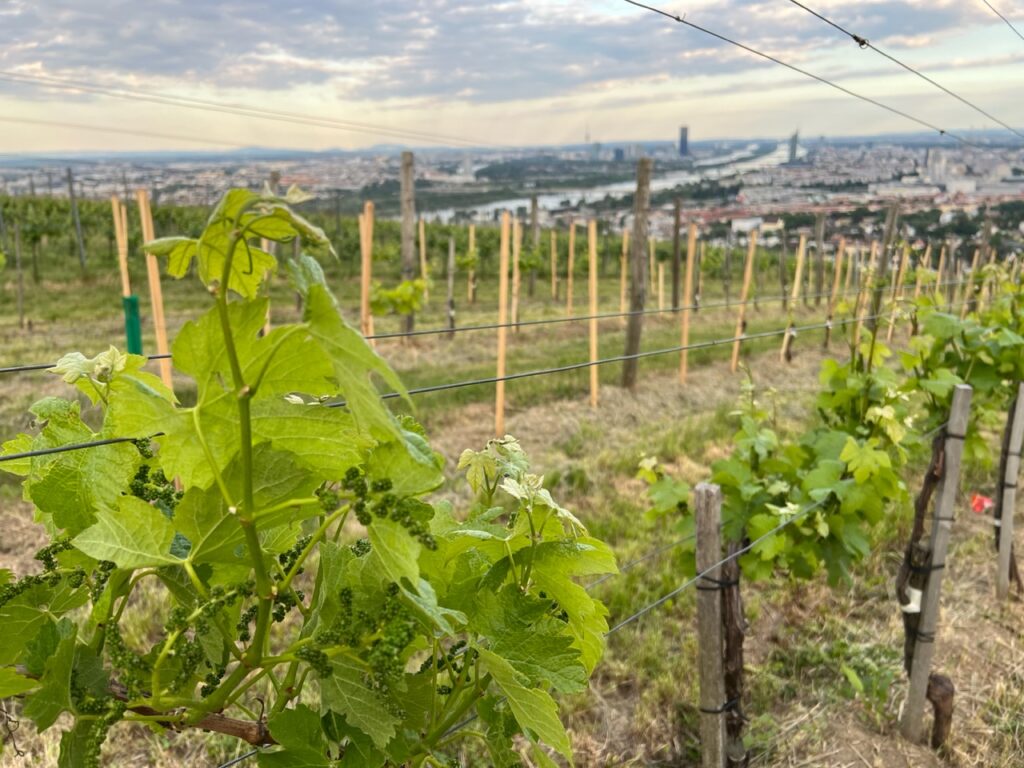
This year the timing of the event was brought up into late May from early June, making it convenient for those visiting ProWein in Dusseldorf, itself pushed back a couple of months due to Covid-19 concerns. It meant that many travelling wine geeks, like myself, could feasibly attend both shows, with only a 3 day gap in between.
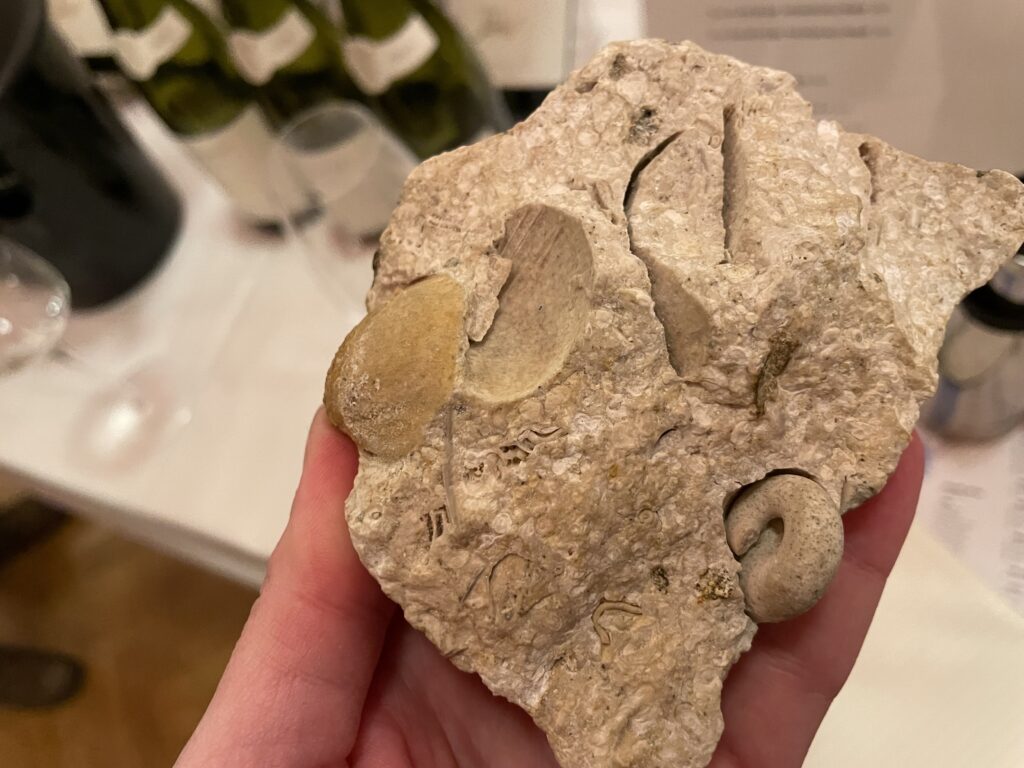
Producers’ smiles matched Yorke’s throughout the 3 days of VieVinum, as old connections renewed, and new relationships were established. The mood was buoyant, with Austrians proud to welcome international guests, talk about Mother Rock, and show what they’ve been crafting these past 4 years. The show’s timing and international messaging couldn’t have been better, with exports year over year showing the highest ever growth in value, breaking the €200m mark with €216m in 2021.
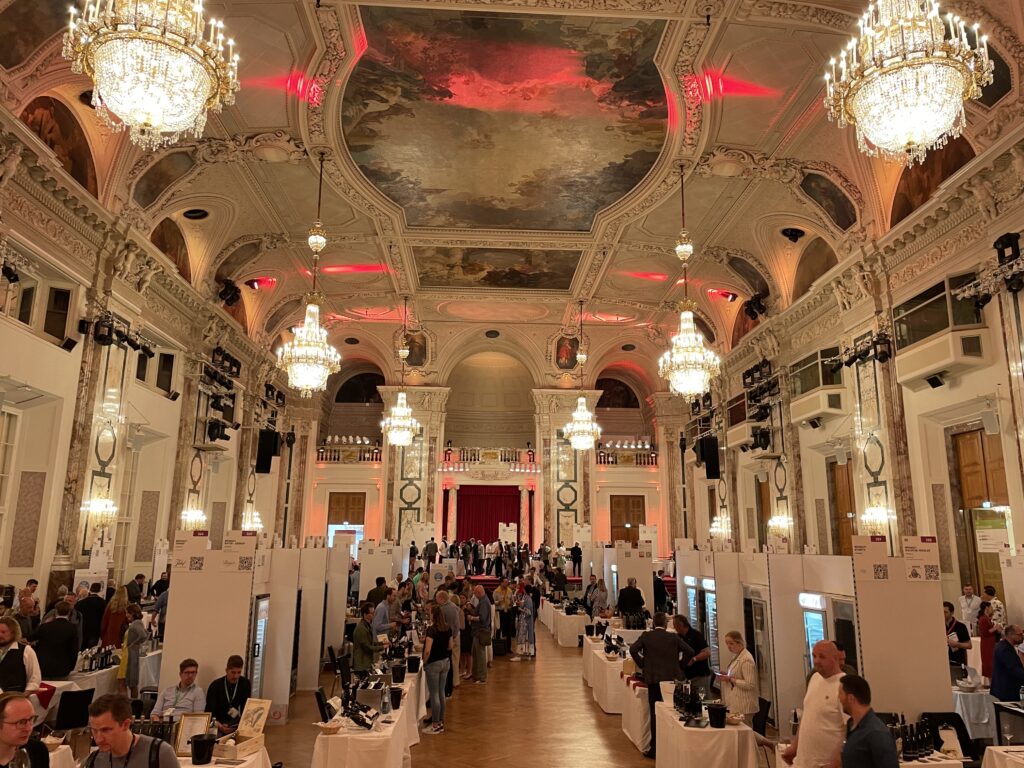
The quality was apparent in the diverse wines I tasted: textural, mineral-driven, focused wines of place, especially in the whites. I knew I was in a happy place with Grüner Veltliner, but I didn’t expect to crush on Weissburgunder on limestone soils so. Lighter reds, especially Blaufrankisch charmed, as did a few of the traditional method sparklers I tasted. I focused on organic (16% of all Austrian wines) and biodynamic wines, as well as low-intervention winemaking, and even after 3 days, I hadn’t made it through every room in the illustrious and labyrinthine palace. Below are my highlights from VieVinum 2022.
*The next VieVinum is scheduled for May 25-27, 2024.
FX Pichler Ried Loibenberg Riesling 2021, DAC Wachau
This was formerly labeled as Loibenberg Riesling Smaragd, though the winery left the Vinea Wachau as of the 2020 vintage, thus dropping the use of the Smaragd term. “It’s irrelevant to us with today’s climate” according to Lucas Pichler. “International customers don’t even know what it means”. 2021 was a great vintage for the winery (reminiscent of 1997, according to Pichler). The Loibenberg is one of the steepest and most barren dry-stone terraced vineyards in Loiben, almost entirely south-facing. Rooted in Gföhler gneiss with calcareous loess, this higher altitude Riesling hums along the palate, buzzing with lime pith and peel, pear skin, apricot through an impressively saline palate. Energy abounds.
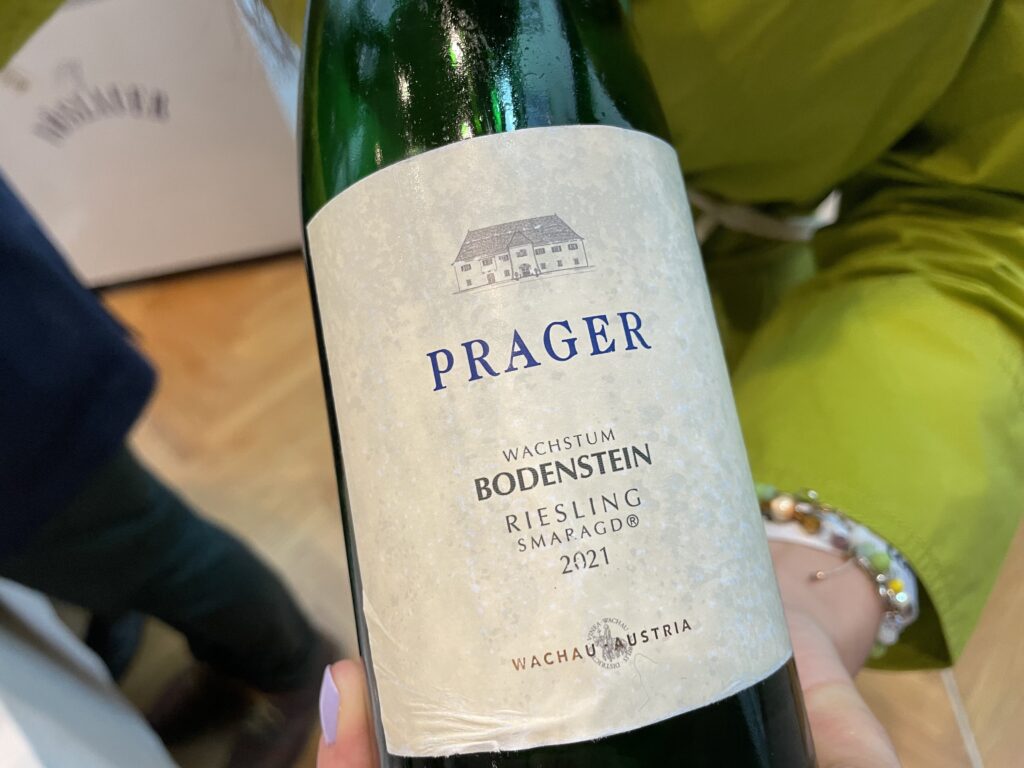
Prager Wachstum Bodenstein Riesling Smaragd 2021, DAC Wachau
In an attempt to create more polyculture and diversity, as well as research the variance between clones, 65 clones of Riesling were planted in Bodenstein in 1993 / 94, and this remarkable wine is a coferment field blend from that 400m gneiss-soiled site. Super saline and streamlined, with lemon, pear skin, white peach, and scented orange blossom. Quite complexed and striking.
Rudi Pichler Ried Kollmütz Grüner Veltliner 2021, DAC Wachau
From the vineyard directly behind the winery, on decomposed gneiss, layered with magnesium and iron, and off 40+ year old vines. This GV had 18 hours skin contact and 5 months on lees in stainless, (no MLF) before bottling. Super savoury, with an alluring thread of reduction throughout the multilayered Bosc pear, green apple, earth, and broken stones that flood the palate. Mesmerizing.
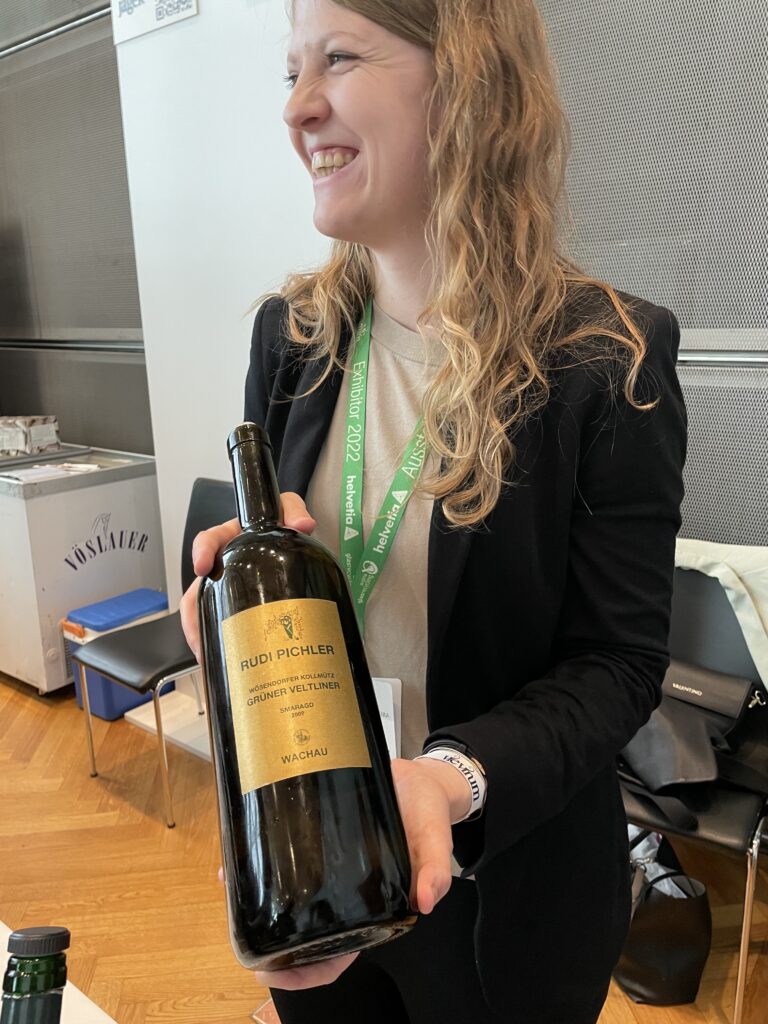
Rudi Pichler Ried Kollmütz Grüner Veltliner 2009, DAC Wachau (magnum)
From behind the table, Sophie Pichler drew this impressive 2009 magnum, showing the evolution of the site. Incredible concentration, with savoury brown butter, wax, ash, and crushed stone, mingling with honeyed green apple and lemon pith. Acidity still shining through an amply saline, savoury finish. Stunner.
Sepp Moser Ried Breiter Rain 1ÖTW Grüner Veltliner 2020, DAC Kremstal
From south facing terraces on loess, this is a powerfully savoury GV with smoked stones, dry honeycomb, quince skin, and a lingering saline finish. Fresh and striking. Demeter certified.
Sepp Moser Ried Gänstreiberin Riesling 2019, DAC Kremstal
From the 0.6ha monopole Gänstreiberin, and its 50% grade S/SW facing terraces planted in 1972 and 1990s, this riesling had a few hours skin contact before fermentation and aging in 1500L Austrian oak for 1 year. Pear, sweet salami, brown butter, ginger, lime pith teem throughout this layered riesling, taut with acidity and energy.
Nigl Ried Hochächer Privat 1ÖTW Riesling 2019, DAC Kremstal
The steep terraced Hochächer is bedded with mica slate, imbuing a profound mineral smokiness to this fleshy, finessed Riesling. White peach, white pepper, tangerine, pear skin and lime pith mingle on the riper, savoury-edged palate, lingering with vibrance acidity on the finish.
Nigl Ried Hochächer Privat 1ÖTW Riesling 2017, DAC Kremstal
Nice to see this wine with a couple more years’ age, giving a honeycomb, quince, pear skin grippy texture to the layered, driven, streamlined palate. The finish lingers with salinity.
Loimer Brut Rosé Reserve NV, Niederösterreich
Fred Loimer makes the most serious set of traditional method sparkling wines I’ve tasted from Austria. From biodynamic vineyards in Village sites Langenlois and Gumpoldskirchen, this blends 70% Zweigelt with Pinot Noir (including 5-6% still wine) and St. Laurent. It was native fermented in stainless over 8 months (4 on lees), and utilizing 20% reserve wines, prior to 30 months on lees in bottle. Our bottle was disgorged April 2022, with 2 g/L. Wild raspberry, white cherry and stony salts flood the complex, integrated palate, with a buzzy underlay adding texture and interest.
Loimer Extra Brut Reserve NV, Niederösterreich
From biodynamic vineyards in Village sites Langenlois and Gumpoldskirchen, the XB blends Zweigelt and Pinot Noir with 40% blend of Chardonnay, Pinot Blanc, and Pinot Gris, spending 2.5 years on lees before disgorgement April 2022 with 2.5 g/L. The base wine was native fermented in stainless, where it rested 8 months (4 months on lees) prior to secondary ferment. Red apple, lemon pith, and toast rule the smart palate, with classic chalky textures and a buzzy citrus acidity to carry. Accessible, yet precise.
Loimer Langenlois Brut Nature Reserve Blanc de Blanc 2016, Langenlois, Niederösterreich
From biodynamic Langenlois villages of Käferberg, Vögerl, Neuberg, this blends 77% Chardonnay with 19% Pinot Blanc and 4% Pinot Gris. The base wine was whole cluster pressed, native fermented in stainless where it remained on lees for 10 months prior to secondary ferment. It spent 50 months there on lees, before disgorge November 2021. Some lines of oxidation threaded throughout the chalky, toasty, citrus blossom, lemon-laced fizz, quite persistent through the bright finish.
Loimer Gumpoldskirchen Große Reserve Blanc de Noirs Brut Nature 2016, Niederösterreich
This Pinot Noir comes from Gumpoldskirchen’s Hausberg and Schwaben villages, and their loess, limestone studded soils. It was fermented on full lees in barrel for 7 months prior to 3 months in stainless tanks before heading to bottle for secondary ferment and 50 months’ rest. It was disgorged in November 2021 with 0 dosage. Wild cherry, raspberry, lemon pith and peel fill the driving wine, with nervy acidity and taut tension upping the interest. The finish lingers long with large flake salts. Powerful.
Loimer Gumpoldskirchen Gumpold 2019, Niederösterreich
A mesmerizing wine, this blends Chardonnay from Gumpoldskirchen Brindlbach, Zierfandler from Satzing, and Rotgipfler from Tagelsteiner, across limestone, gravels and clay soils. The varieties were fermented separately before blending and resting on full lees (no SO2) for 1 year in big oak barrels, followed by time in stainless. It was bottled unfiltered. Powerful and striking, with broken stones, wet stone, green apple, pear skin and flecks of reduction over a limestone-strung base, shining with chalky persistence through a lengthy finish. Textural, complete, and memorable.
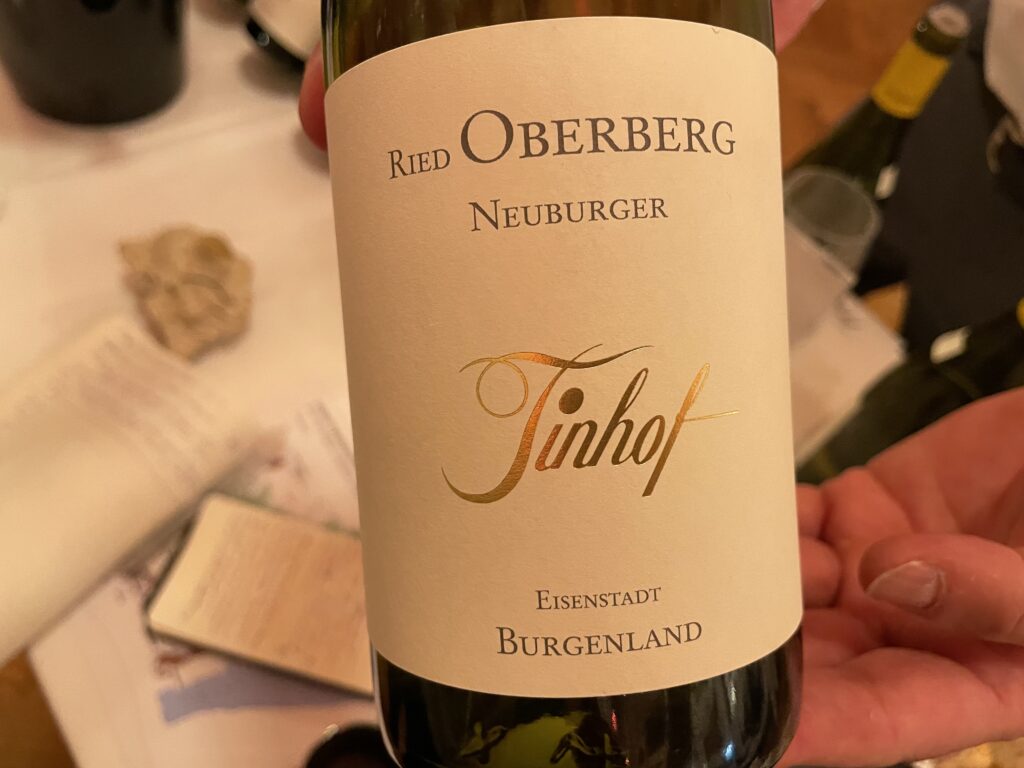
Tinhof Ried Oberberg Neuburger 2019, Burgenland
Erwin Tinhof is the king of Neuburger, as this wine deftly illustrates. From Oberberg vineyard, in Eisenstadt (where Tinhof is based) near to a quarry, these Neuburger vines are now 50+ years old, tooted in stony limestone soils. It was native fermented and aged in 2 barrels over 8 months. Such a wonderful texture here, with a buzzy chalky limestone, left bank Chablis-like, livening the whole. Lemon and lime pith buzz throughout, with tight white florals strung across the taut frame.
Tinhof Ried Golden Erd Weissburgunder 2019, Burgenland
Golden Erd is a historic vineyard, first documented in 1570, and the profound limestone soils give a completely different character to Weissburgunder than typically seen. These 50 year old vines are native fermented and aged in 1 x 500L barrel. Quite deep, wrought with chalk, and woven with mandarin, pear skin, lemon peel and bergamot, on a structured, finely spiced palate. Great presence.
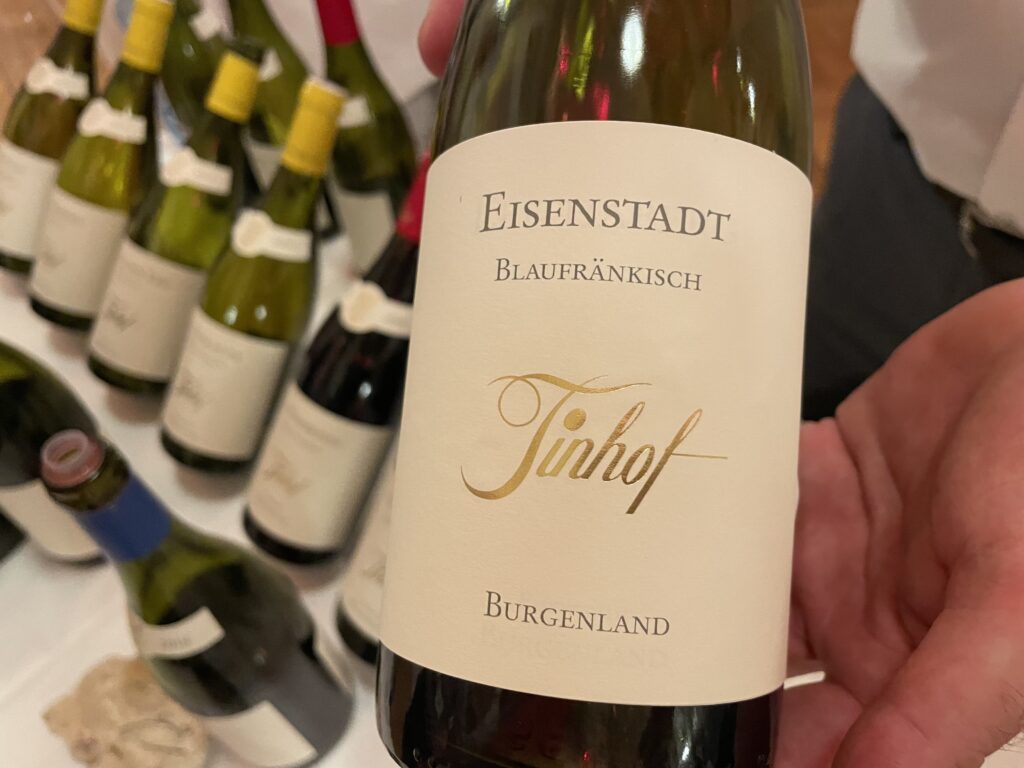
Tinhof Eisenstadt Blaufrankisch 2019, Burgenland
Who knew Blaufrankisch could be so light and graceful? These 25-30 year old vines rooted in Eisenstadt’s limestone soils tell so. After a 13 week native ferment on skins, this went to older big Austrian and acacia barrels for 18 months. Darker plum, wild blackberry, black cherry and cracked pepper finesse their way through this fine, firm framed red, with a very bright buzzy underlay. Herbaceous garrigue and spiced florals perfume through the saline finish.
Tement Ried Zieregg Weissburgunder GSTK 2018, DAC Südsteiermark
From their spectacular home vineyard site in South Steiermark, on the Slovenian border, this Weissburgunder streams apple blossom, apple leather, brown butter and fine spice across a cushioned lees bed, all lit with the site’s limestone reef based soils. There’s a marked salinity that lingers on the finish This spent 18 months on lees in small neutral oak casks, and was bottled unfiltered. Lovely to find a Weissburgunder with serious presence and intent.
Tement Ried Steinbach Fürst Muskateller, 1STK 2019, DAC Südsteiermark
From Steinbach Fürst’s red sands in Gamblitz, this Muskateller (a 50/50 split between Yellow and Gold Muscat) spent 24 months on lees in stainless. There’s a lovely blend between savoury and perfumed, with grapefruit pith and peal, wild herbs, and an expansive buzzy palate finishing with a raft of stony salts. A serious Muskateller with presence.
*I visited Fritz Wieninger at his winery in Wein the day before VieVinum to taste through the Wieninger and Hajszan Neumann wines, and had time to sit and properly taste (hence, my scores). While both wineries are biodynamic, Hajszan Neumann is Fritz’ natural project, where he has greater flexibility to experiment with low-to-no intervention winemaking techniques.
Wieninger Ried Kaasgraben Grüner Veltliner Sievering 2020
From the single vineyard Kaasgraben, in Sievering, approximately 3km west of Nussberg, at altitude and with calcareous sandstone. These GV vines are 50 years old, and this was native fermented and aged 6 months in large oak barrels. Powerful forward, with some subtle spiced oak toastiness woven with flinty reductive notes, earthy lees, white pepper, and gentle salinity on the finish. Power with finesse is hard to achieve, but this certainly does. 92/100
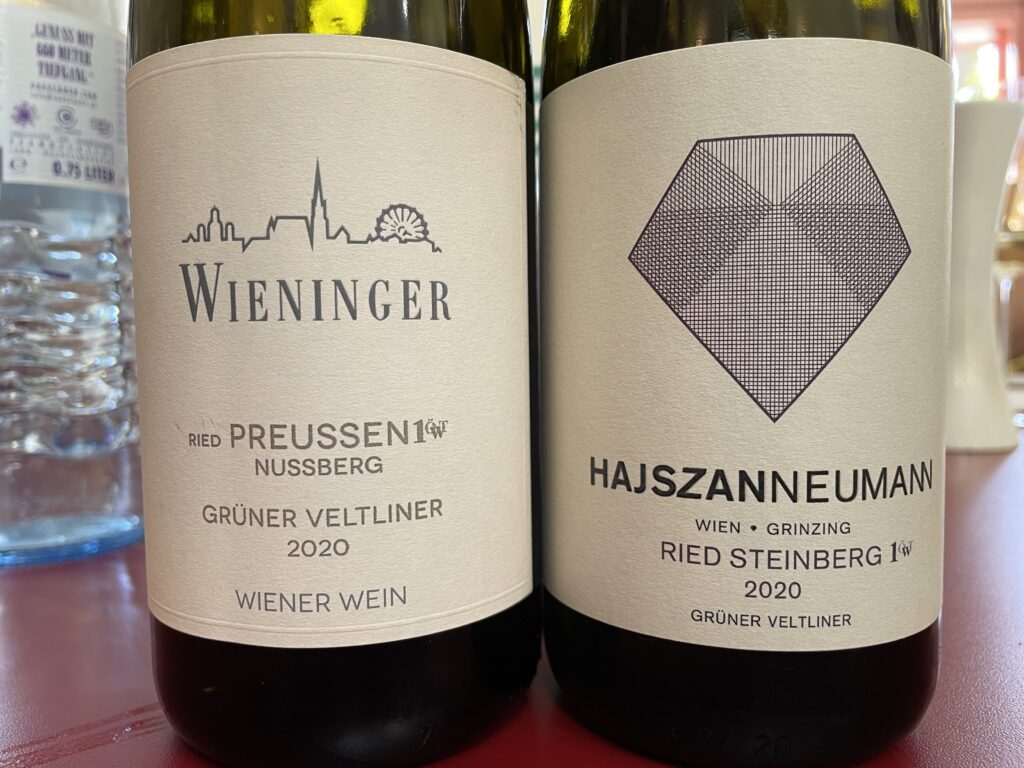
Wieninger Preussen 1ÖTW Grüner Veltliner 2020
From the centre west section of Nussberg, on limestone and clay soils, this is from 40+ year old vines with 5 hours of maceration before native ferment in stainless, with time on lees. Expansive with pear flesh and skin, tangerine, subtle quince, light wax, and ample flake salts, this youthful wine is quite serious, with ample time ahead. 94/100
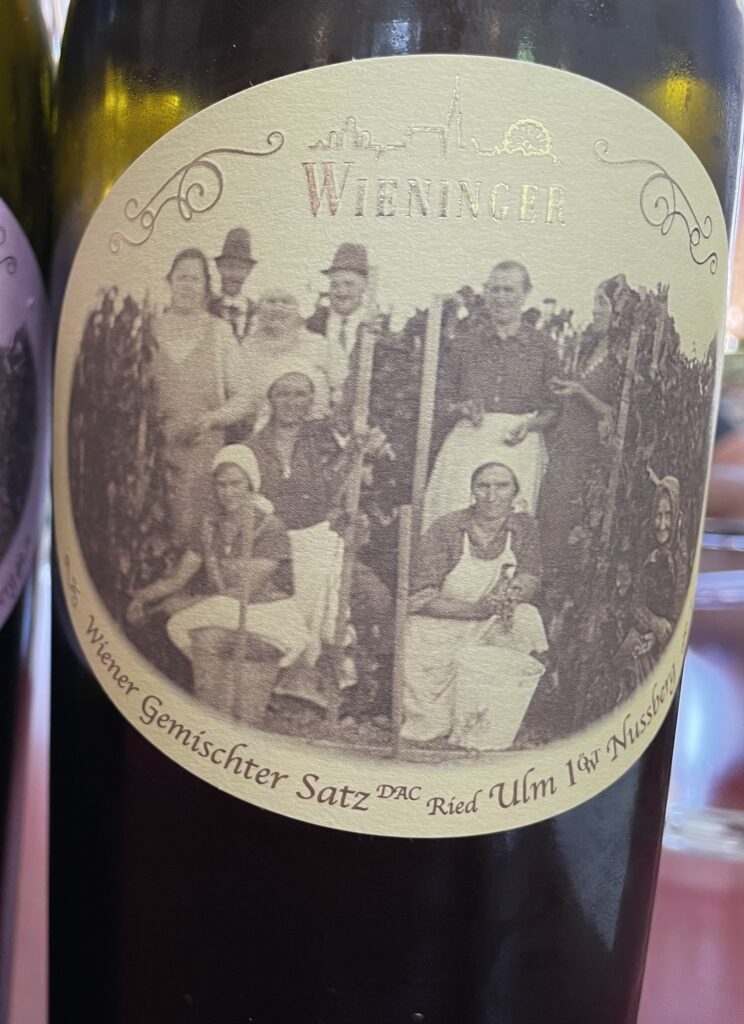
Wieninger Ried Ulm 1ÖTW Wiener Gemischter Satz DAC 2020, Nussberg
From the steep southern slope on the eastern part of the Nussberg, directly next to the Danube, these grapes are rooted in calcareous clays, with ample fossilized shells dotting the vineyards. This was the first field blend in Frtiz’ production, from his ‘masterpiece site’. This blends 75+ year old Weissburgunder, Neuburger, Welschriesling, Grüner Veltliner, Sylvaner, Zierfandler, Rotgipfler, Traminer and Riesling, co-harvested and cofermented, in a mix of 80% stainless, 20% Slavonian oak for 1 year. Green apple, pear skin, yellow apple blossom hums along a tight, sleek frame, with ample minerality buzzing throughout the lengthy palate, finishing with a saline wash. Impressive. 93/100
Wieninger Ried Rosengartel 1ÖTW Riesling 2020, DAC Nussberg
This 65 year old Riesling, from the centre of Nussberg’s weathered limestone Ried Rosengartel, was so special they decided to isolate it from the Gemischter Satz and make it a single wine. The grapes saw 5 hours of maceration before a native ferment in stainless, where it remained until the following June. White honey, white pepper rule the nose, with an alluring reductive lick wrapping around green apple, white peach, pear skin, with a striking limestone buzz, and ample flake salts lingering on the long finish. Stunning. 94/100
Hajszan Neumann Ried Steinberg Grüner Veltliner 1ÖTW 2020, Grinzing, Wien
From the Grinzing vineyard, a western extension of Nussberg, this biodynamic GV grows in stony weathered limestone soils high in lime and with moderate clay. After 6 hours of maceration this was native fermented in stainless, where it remained for a short time on lees before bottling without fining. A cool stony nose reveals white grapefruit, white pepper, lemon pith across amply shimmery salinity on the finely textured palate. Energy abounds. 94/100
Hajszan Neumann Ried Weisleiten Wiener Gemischter Satz DAC 2021, Wien
From an old Nussberg vineyard called Weisleiten, facing northeast, and its weathered shell limestones with generous clay, this biodynamic blend of Pinot Blanc, Grüner Veltliner, Neuburger, Riesling, and Welschriesling was macerated for 6 hours and native fermented in stainless and older oak barrels, with time on lees before blending. Subtle blossoms, elderflower, apricot, pear skin is gripped and structured with a fine, tight frame that drives through the amply saline finish. Beautifully balanced. 92/100
Hajszan Neumann NATURAL Gemischter Satz DAC 2019, Wien
The grapes for this natural Gemischter Satz come from two old Nussberg vineyards: Ried Weisleiten, and Ried Ulm. The soil of both is comprised of limestone and clay, with a very high chalk component throughout. In 2019, the varieties are mainly old vine Grüner Veltliner, Welschriesling, Pinot Blanc, Riesling, and Traminer. The grapes were native fermented in concrete yeggs, on skins for 5+ months with no SO2. In March 2020 the wine was taken off skins and rested in older 500L barrels for 6 weeks prior to bottling without fining or filtration. Powerful and forward, stencilled with medicinal white cherry, smoked herbs, white peach, lime pith / peel, pear skin, apple blossom and quince, with a super saline finish that extends long beyond the glass. Fascinating. 93/100
*I visited Weingut Sattlerhof (Südsteiermark), and Weingut Heinrich (Gols) in my break between ProWein and VieVinum, and will report on those visits separately.

